Saturday, December 22, 2018 -
We are off to Chenai.
We are off to Chenai.

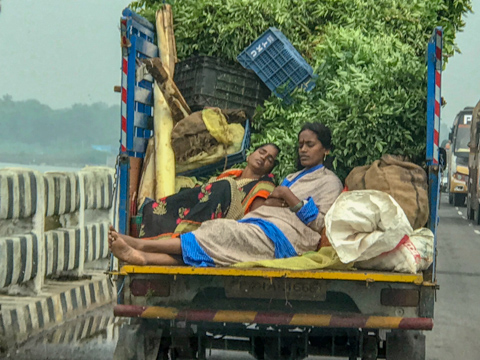
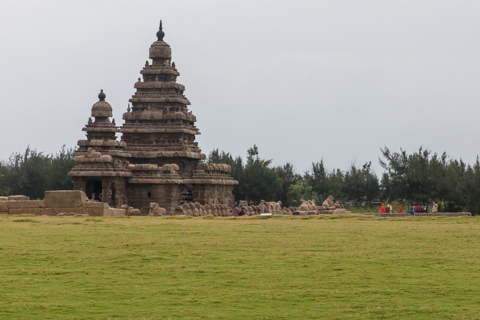
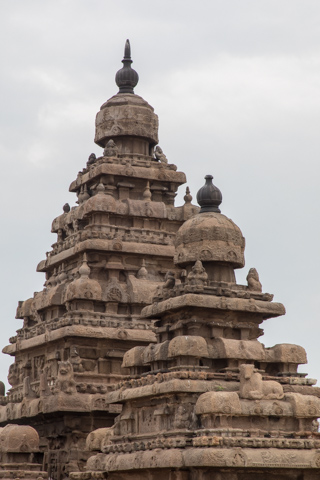
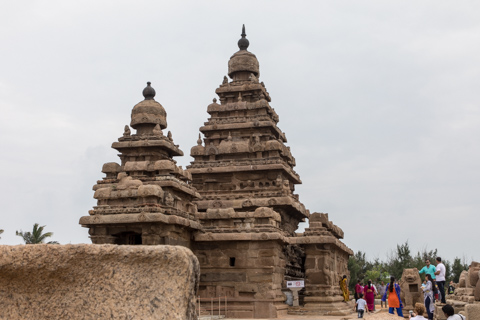
Marco Polo and the European merchants that came to Asia after him called the site Seven Pagodas. One of these is believed to be the Shore Temple. The temple probably acted as a landmark for navigation of their ships. As it appears like a Pagoda, the name became familiar to the seafarers.


Cave rock temples surround the big temple.
The salt in the ocean has washed away many of the details carved in the stone.
We could see a sacrificial place where antelope were sacrificed at the base of an idol.

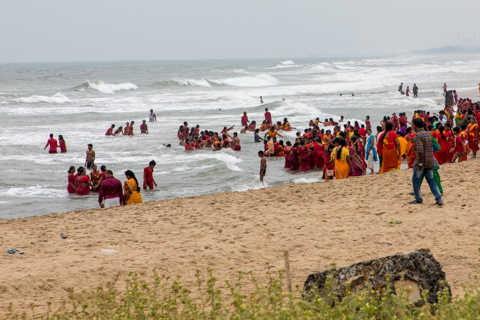
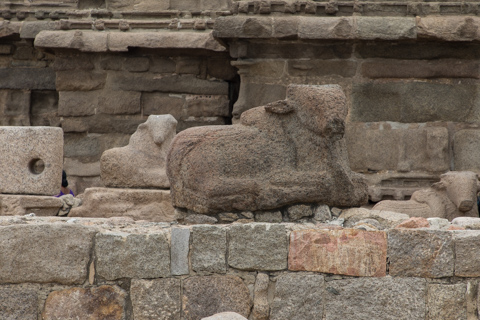

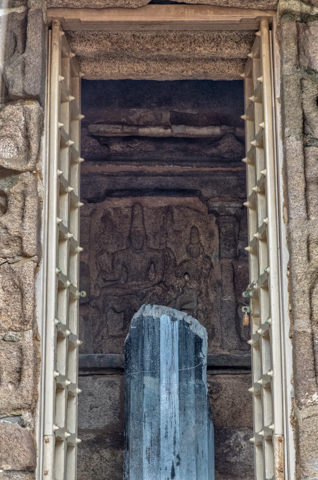

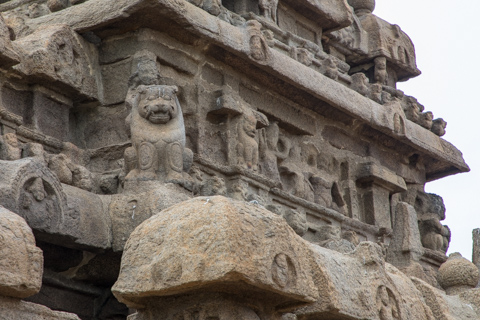
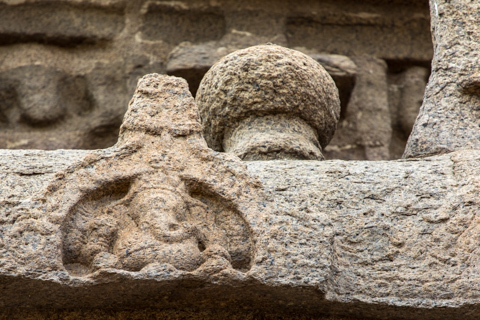

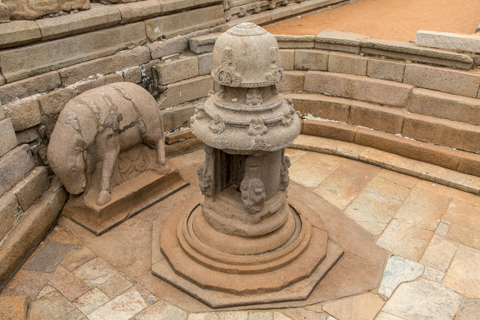
Micah stone is embedded in the temple structure so when light shines on the temple, the micah stones reflect the light.
The carving of the wild boar is considered the third reincarnation of Siva.
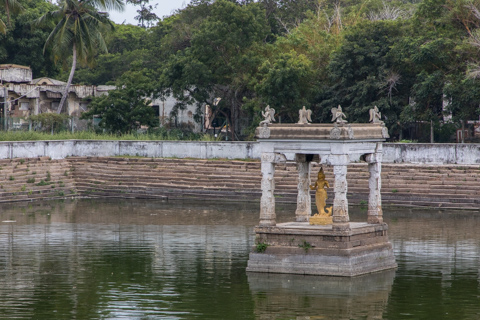

This lion is one of the sculptures created out of a single rock.
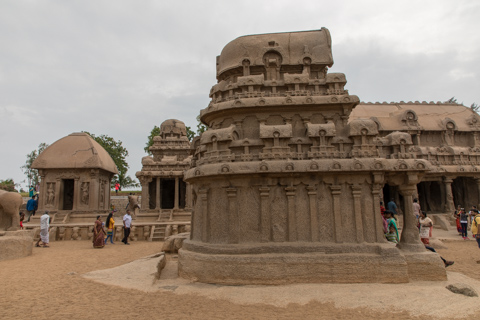
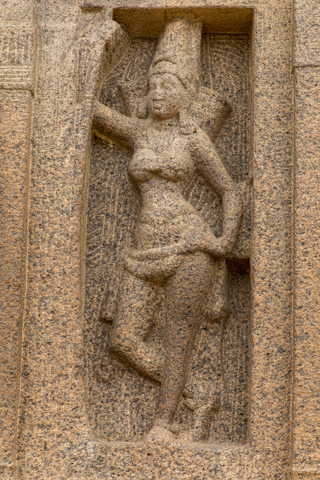
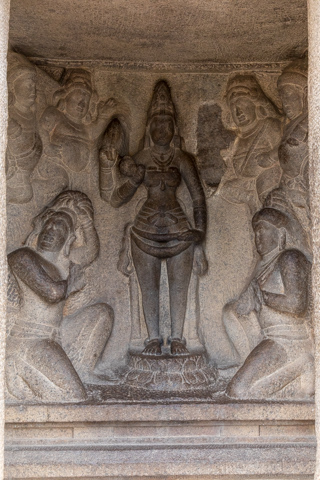
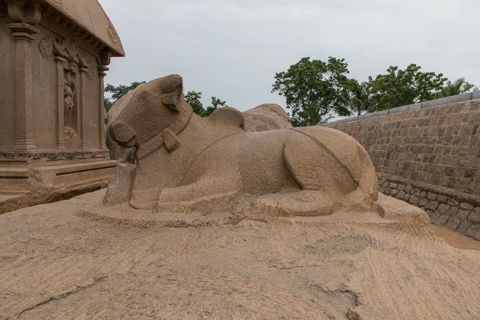
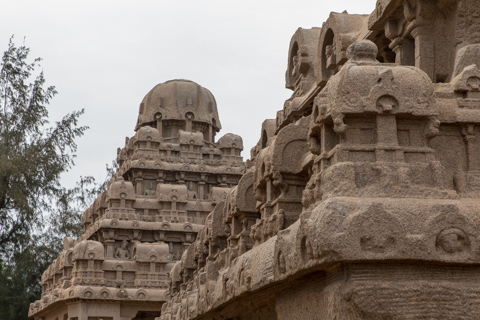

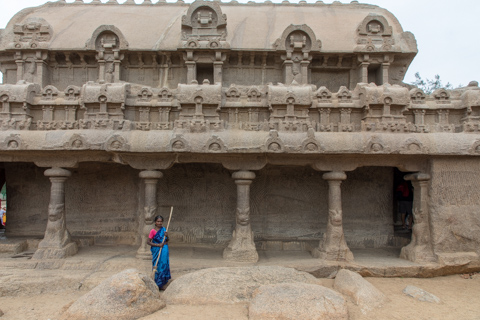
This is Bhima Ratha. Its incomplete interior was probably intended to house a reclining Vishnu. Unlike the other rathas, the temple has no inscriptions or sculptures. This woman stopped sweeping to pose for the picture.
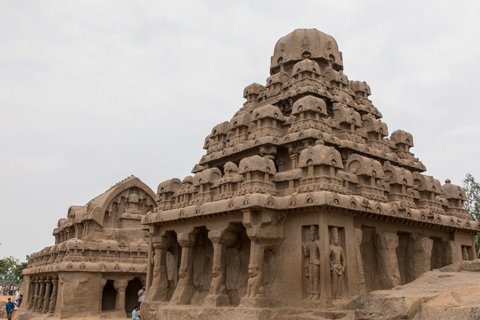
It is the tallest of the rock carvings with a height of 35 feet
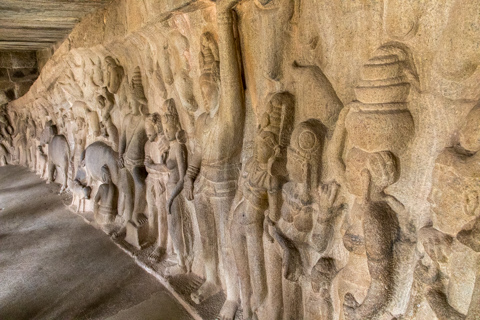
The walls of the pillared hall depict village life woven into the story of Krishna. Krishna holds Goverdhana Mountain, under which there are people, cattle, and other animals, in one section. In another section, a young man holds the hands of his beloved and pulls her in the direction he is going.
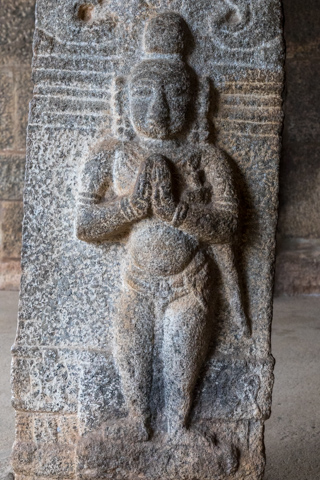
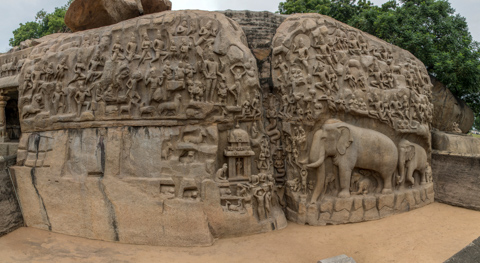
The legend depicted in the relief is the story of the descent of the sacred river Ganges to earth from the heavens led by Bhagiratha. The relief contains over a hundred figures


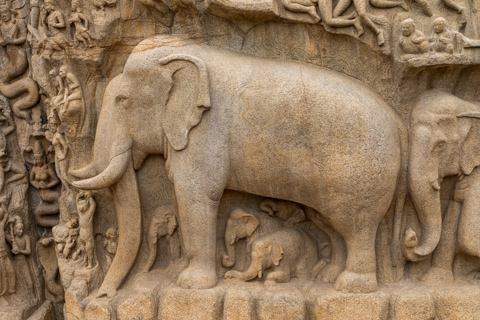
The elephants represent a herd moving towards the river to drink water. The male elephant carving precedes that of its female partner. There are all several little elephants around the adults.
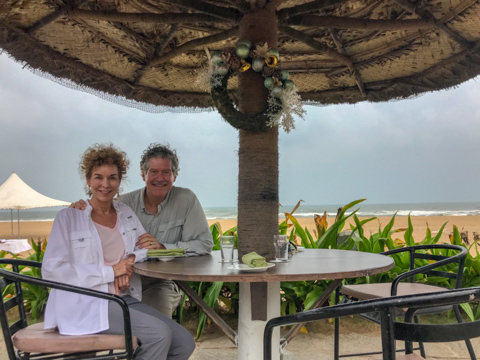
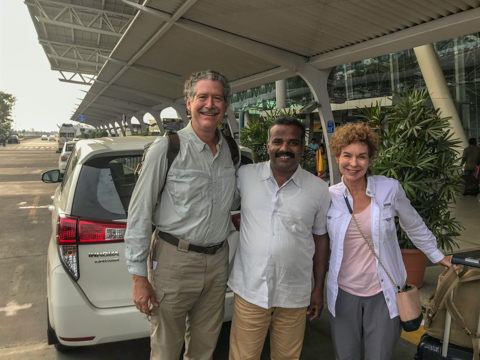
As we pose outside the airport with Sandosh, it is a tearful goodbye. He has been with us for most of this trip and is a fantastic guide as well as a safe driver in the sheer craziness of India's traffic. From herds of goats on the road, to camels, Tuk Tuks, and mopeds -- we saw it all!
As they say, "all good things must come to an end," and we are grateful for the incredible sights, prayerful sounds, and vivid colors we saw along the way.
We give thanks to all we encountered, for sharing your special place, for opening your hearts to us, and for making this journey incredibly memorable and one we hold dear forever.